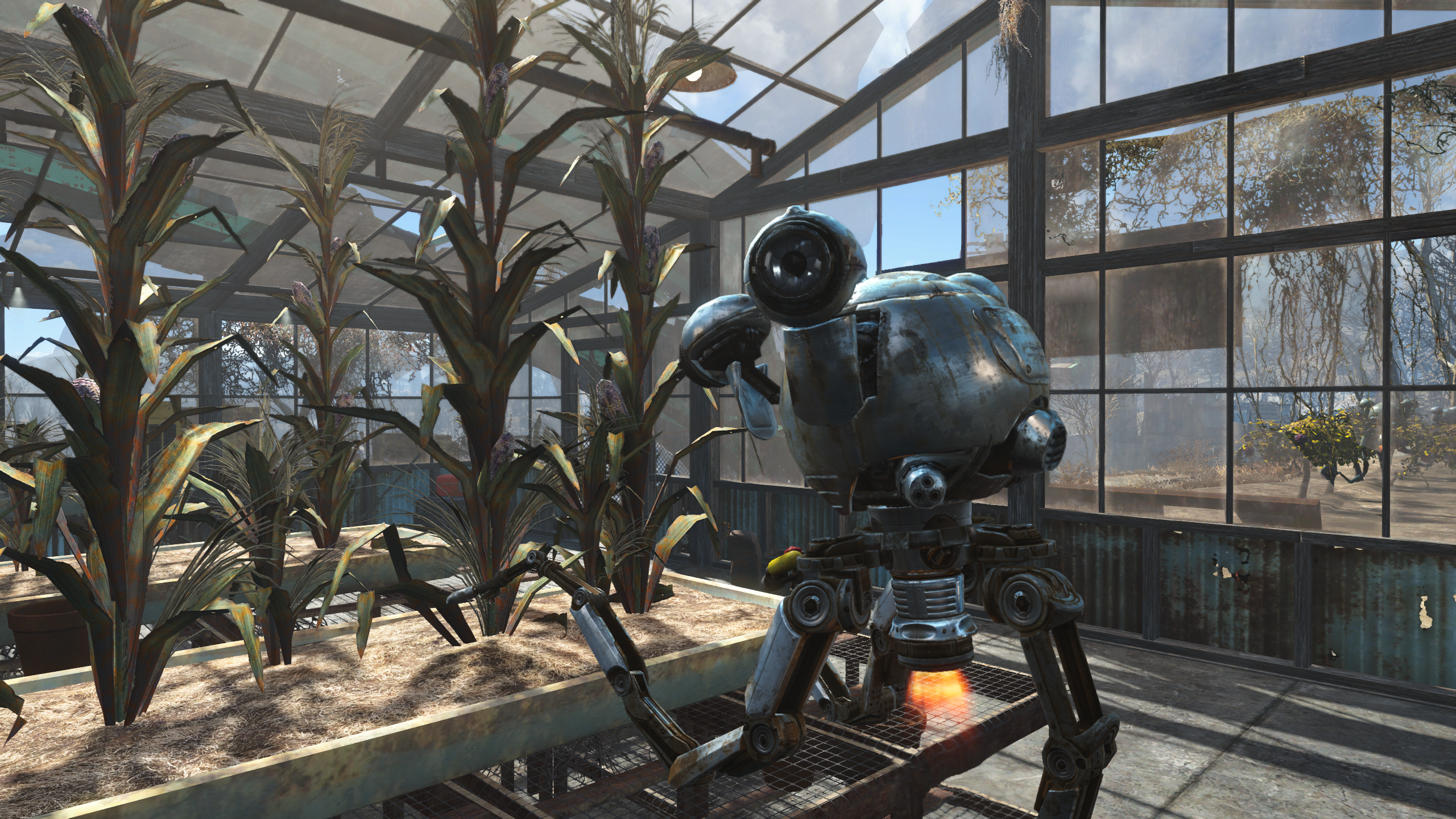Origin Millennium review

The Origin Millennium PC is like the fanciest grilled cheese sandwich available. It’s aesthetically considered, well lit (adjustable via an LED remote for every craving), and taking a bite out of that sucker will forever change the way you look at PC gaming. Because the games will look nicer, even if your wallet is significantly thinner. Also, the bite is figurative. Don’t eat computers.
Performance
With a 980 Ti SLI setup, an overclocked Intel Core i7-6700k, and 16GB of HyperX DDR4, it’s no surprise the Millennium runs every modern game at 1920x1080 maxed out without issue. At 2560x1440, most games I tried ran at around 60 fps or higher on average. Specs are big draw for the Millennium; the components are all there, appropriately cooled, and they work. Phew, do they work.



Performance is excellent, as expected. Just don’t look to the Millennium for reliable 4K gaming yet. We’re still a ways off from running the most demanding games at higher definitions without sacrificing some settings, so waiting a few years while VR kicks hardware production and integration into gear certainly wouldn’t hurt. If you want top tier gaming now, today, like this instant, then the Millennium is about as good as you’ll get before the diminishing returns on better (and much more expensive) hardware hit.
Form factor
Functionally, the chassis is a swiss army knife. It allows for variable mounting, which means the motherboard can lay down in four different way to account for variances in cooling methods or build configurations. The front door has an adjustable orientation and covers five accessible drive bays, just in case you want to mess with RAID setups or swap drives a lot. Up top, there’s four USB 3.0 ports, mic and headphone inputs, a fan mode, and fan controller button. They’re a bit small and crowded, but a welcome convenience.
The chassis falls into the cliched industrial PC gaming aesthetic of equating hardware to well-tuned machinery. While I understand the parallels, towering black monoliths broken up by jutting symmetry and accented with bright red LEDs doesn’t do much for me.
It’s as if someone used a trash compactor to compress a xenomorph into a cube, painted up the sides a bit, then rubbed it down with car wax. None of it looks bad, but I’d rather my PC stay invisible instead of flag down any passersby for approval. The lights certainly set a mood, but if the mood is Cool Excess, I’m blushing, I’m out. That said, this feels like a PC build for someone that wants it to stand out, like a nice car. If PC gaming is equal parts showmanship and function for you, and if futurist industrial design floats your boat, then there might be something to love in the Millennium’s design.

Looks aside, the Millennium is an absolute beast. Yes, ‘beast’ is a cliched PC gaming descriptor and should be saved for rare occasions, but it applies in this instance. It’s built to last, fully featured, and contains top-tier hardware. The price makes sense, even if it hurts. But hell, if I could afford a grilled cheese sandwich made with cheese from rare cows that feed on fennel, licorice, juniper, laurel bay, wild strawberries, and only lactate during May and June, you bet I would. That’s probably some good cheese. The Millennium may feel extravagant, but it gives a ton more for quite a bit less than a $214 grilled cheese.
Keep up to date with the most important stories and the best deals, as picked by the PC Gamer team.
Millennium vs DIY
| Origin Millennium components | Approximate retail price |
| Intel Core i7-6700k (4GHz) | $420 |
| GeForce GTX 980 Ti (x2) | $1240 |
| 240GB OCZ ARC100 SSD | $65 |
| 3TB Seagate ST3000DM001 | $85 |
| ASUS Maximus VIII Hero | $230 |
| Corsair RM1000 PSU | $160 |
| 16GB HyperX DDR4 | $96 |
| Liquid CPU cooler | $60 |
| Fans (~6) | ~$20 |
| LG Black Blu-ray RW | $40 |
| Windows 10 Home | $110 |
| Chassis | $50-200 |
| Approximate total DIY cost: | ~$2,630 |
Prebuilt price is approximately $3,700, before additional warranty options that range from $70 to $270. That’s around a $1,000 difference, which even after labor and shipping are factored in, is a hefty price difference. It’s beautifully put together,, but without the inclusion of custom liquid cooling (there are options for it) I find the Millennium harder to recommend to someone with even a modicum of build experience.
That isn’t to say the Origin Millennium isn’t worth the asking price. Nothing about the Millennium is unfair—I don’t want to undermine the effort that goes into making these PCs. They’re put together by genuine enthusiasts with mastery of the craft. It’s just that $3,700 is not a small number. That’s 15 percent of my college debt, a few months of rent (outside of the Bay Area), or almost five of those collector’s edition Yoda Lego sets. If you can afford the Millennium and don’t want to spend time researching and building your own, then go for it. The Millennium is a pricey niche machine that kicks a whole lot of ass, and its flashy design says it knows it.
Update 12/15: Our initial Witcher 3 benchmark was taken while the game was running in borderless fullscreen mode, which isn't compatible with SLI GPUs. We added the SLI benchmark above.
James is stuck in an endless loop, playing the Dark Souls games on repeat until Elden Ring and Silksong set him free. He's a truffle pig for indie horror and weird FPS games too, seeking out games that actively hurt to play. Otherwise he's wandering Austin, identifying mushrooms and doodling grackles.


